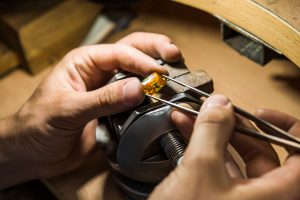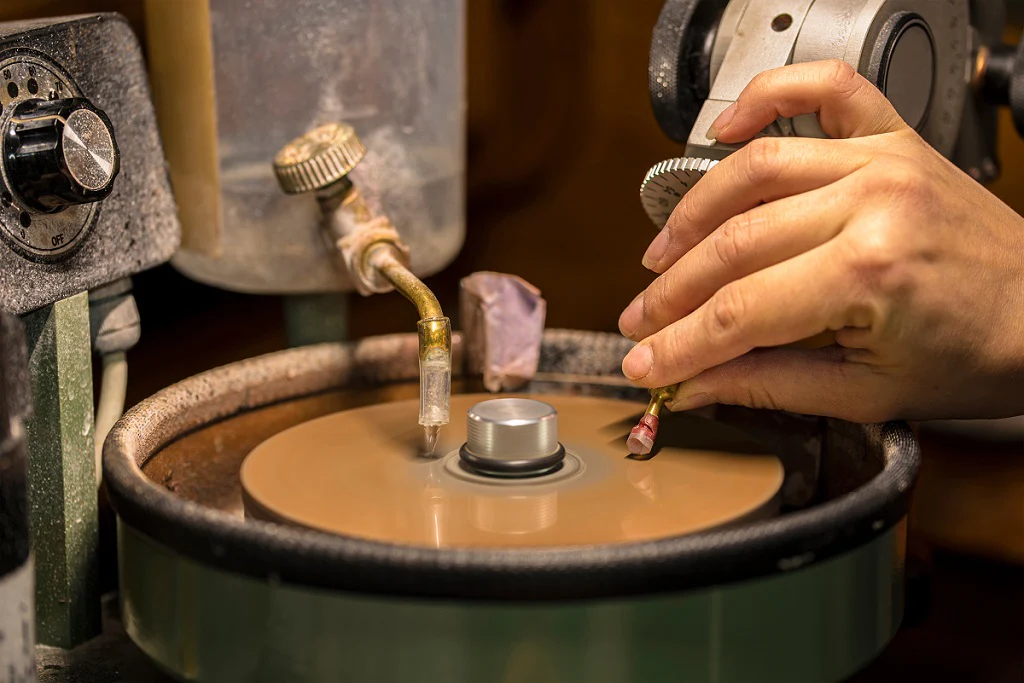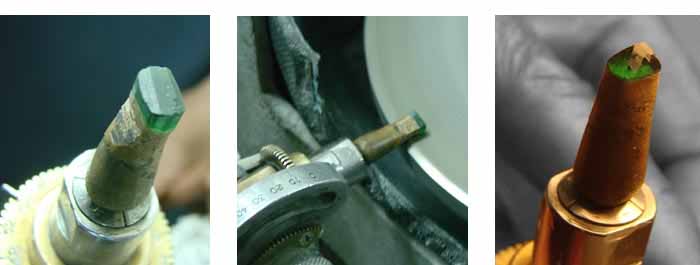Gemstone polishing is an essential process in enhancing the beauty and value of precious stones. Whether for personal enjoyment or professional purposes, mastering the art of polishing gemstones can elevate their appearance and allure. In this article, we’ll explore the step-by-step procedure for polishing gemstones.

Introduction to Gemstone Polishing
Definition and Importance
Gemstone polishing refers to the process of refining the surface of a rough stone to achieve a smooth, lustrous finish. It’s vital in revealing gemstones’ beauty, and enhancing appeal and value.
Brief Overview of the Procedure
The polishing process involves several stages, including grinding, sanding, and buffing, each aimed at progressively refining the stone’s surface to achieve the desired shine and smoothness.
Understanding Gemstone Polishing
Techniques and Tools Involved
Gemstone polishing utilizes various techniques, such as faceting, cabochon cutting, and tumbling, depending on the desired outcome and the characteristics of the stone. Specialized tools like grinding wheels, sandpaper, and polishing compounds are employed to achieve precision and consistency in the polishing process.

Factors Influencing the Polishing Process
The hardness, clarity, and composition of the gemstone are key factors that influence the choice of polishing techniques and tools. Each gemstone requires a tailored approach to achieve optimal results while preserving its natural beauty and integrity.
Preparation for Polishing
Cleaning and Inspecting the Gemstone
Before polishing, the gemstone must be thoroughly cleaned to remove any dirt, debris, or residues that may affect the polishing process. Additionally, inspecting the stone for cracks, inclusions, or other imperfections helps determine the appropriate approach for polishing.
Setting Up the Workspace
Creating a conducive workspace with proper lighting, ventilation, and stability is essential for conducting the polishing process effectively. Organizing the necessary tools and equipment in a clutter-free environment facilitates smooth workflow and precision in polishing.
Step-by-Step Procedure for Polishing
Grinding the Surface
The first step in the polishing process involves using a coarse grinding wheel to remove surface irregularities and achieve the desired shape and contours of the gemstone.

Sanding to Refine the Shape
Once the initial shaping is completed, progressively finer grades of sandpaper are used to smooth out the surface and refine the contours of the gemstone.
Polishing with Abrasive Compounds
Polishing compounds, such as cerium oxide or diamond paste, are applied to the gemstone’s surface to achieve a high gloss finish and enhance its brilliance and luster.
Final Buffing for Shine
In the final stage of the polishing process, a soft cloth or felt wheel is used to buff the gemstone, removing any remaining traces of the polishing compound and imparting a mirror-like shine to the surface.
Special Considerations for Different Gemstones
Variations in Hardness and Composition
Different gemstones have varying levels of hardness and susceptibility to scratching or damage during the polishing process. It’s essential to understand the unique properties of each gemstone and adjust the polishing technique accordingly to avoid potential damage.
Tailoring the Polishing Process Accordingly
Certain gemstones may require special treatments or precautions during the polishing process to mitigate risks of heat damage, color alteration, or structural compromise. Consulting reputable sources or experienced lapidaries can provide valuable insights into the specific requirements for polishing different types of gemstones.
Tips for Achieving Optimal Results
Maintaining Consistency in Pressure and Speed
Consistency in applying pressure and controlling the speed of the polishing tools is crucial for achieving uniformity and smoothness in the polished surface of the gemstone. Additionally, maintaining a steady hand throughout the polishing process ensures precision and enhances the overall quality of the finished product. It is essential to remain vigilant and attentive to detail during the polishing process to achieve optimal results and showcase the gemstone’s natural beauty effectively.
Importance of Patience and Precision
Gemstone polishing demands meticulous attention, patience, and precision. Rushing through the process may result in subpar outcomes or irreversible damage. Therefore, it’s crucial to approach each stage with care and diligence. Additionally, using the appropriate tools and techniques enhances the polishing process, ensuring the gemstone’s optimal shine and clarity.
Safety Precautions
Protective Gear Requirements
When polishing gemstones, it is crucial to prioritize safety by wearing appropriate protective gear, such as safety goggles, gloves, and respiratory masks. Furthermore, by adhering to proper safety protocols, artisans can confidently carry out the polishing process while minimizing risks and promoting personal well-being.

Avoiding Common Pitfalls
To mitigate the risk of accidents and damage to the gemstone or personal injury, it is crucial to avoid overzealous polishing, improper handling of tools, and neglecting safety precautions. Therefore, adhering to established safety guidelines and exercising caution at every stage of the polishing process is paramount.
Conclusion
Gemstone polishing is a captivating craft that offers endless opportunities for creativity and self-expression. By following the step-by-step procedure outlined in this article and incorporating valuable tips and considerations, enthusiasts can embark on a fulfilling journey of transforming rough stones into exquisite gems that sparkle with brilliance and allure.
